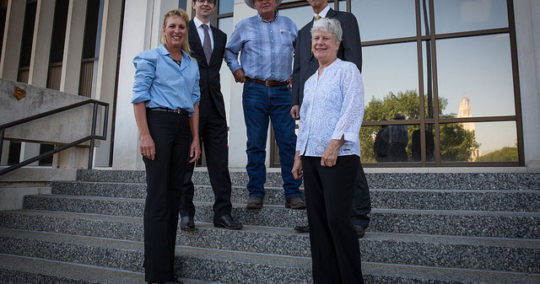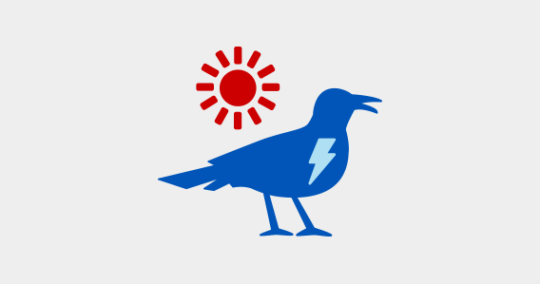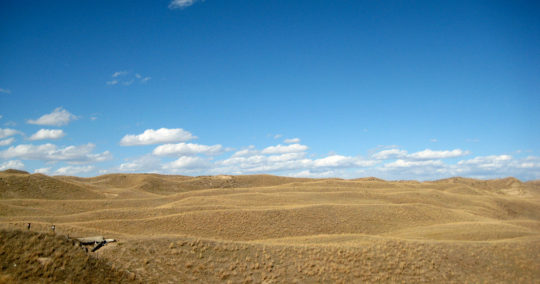Bold was a key group on the frontlines of the Keystone XL pipeline fight. The information below we have kept in place so people can refer back to how a small but mighty group led the way in stopping this multi-billion dollar tarsands pipeline.
Bold Nebraska and allied groups worked with landowners and citizens starting in early 2010 to make sure our voices were heard on the concerns over the risky Keystone XL pipeline. Our goal was to stop the TransCanada pipeline to ensure landowners rights were protected and our water and our land were kept safe.
TransCanada misleads landowners, telling them “this is your best deal, if you don’t sign TODAY offers will go down.” This is 100% a lie from TransCanada. They have said this for the past 5 years and offers only go up, not down. If you would like information so that you know all of your options and your property rights please contact ben@boldnebraska.org or call NEAT (the legal landowner group) at 402-705-8679.
You can learn more about NEAT, TransCanada’s one-sided contracts and more landowner rights here: http://www.nebraskaeasement.org
Critical info:
- TransCanada has no legal route for their pipeline through Nebraska. A Nebraska district court judge ruled in favor of landowners who sued Gov. Heineman over the unconstitutional law LB 1161.
- TransCanada sent out offers to landowners essentially doubling and tripling what they have offered before, offers are high as $300,000 now. NEAT is encouraging folks not to sign anything and to call the legal team Domina Law Group, ask for Brian Jorde or call Ben (402-705-8679).
- You can read more about legal aspects on the Domina Law Group website and on the NEAT website.
- More info about the pipeline, maps, tarsands, click here.
- Take action by writing letters to Pres. Obama, click here.
- Do NOT let TransCanada on your land. You have no legal obligation to do so. If you let TransCanada on your land you are then giving them access to a lot of information. One, they will get your SS# (in order to pay you the land assessment fee) which gives them access to more information about you which helps them in the negotiation process. Two, the first yes is what they need in the power of negotiations, meaning once you say yes they know they have started to build a relationship with you and that it will be easier for the next yes. Lastly, never talk about medical, family or other personal things with TransCanada. Lawyers, David Domina and Brian Jorde, working with NEAT also caution landowners against allowing any entry on their land by TransCanada representatives.
Here is a list of sections in this blog post, you can click on the link you are looking for or just scroll through this entire post:
- Attention Landowners, Next Steps
- Landowner Rights
- Pipeline Route Maps
- More Info on Tarsands and TransCanada Pipeline (including info on spills and chemicals mixed with tarsands)
- Upcoming Meetings
- Bold’s Stance on Tarsands Pipelines
- Bold and Legal Contacts
- Pictures and Videos
Attention Landowners, Next Steps
TransCanada may try to take your land soon for its pipeline.If you would like free information so that you are fully informed of your options and your rights please contact ben@boldnebraska.org right away.
If you are interested in either trying to do any of the following we are here to help:
- Stop the pipeline
- Keep the pipeline out of the Aquifer and Sandhills (not just their designated area)
- Negotiate with other landowners to get a uniform set of easement agreements (things like liability of spills on your land, decommission/removal of pipe once its out of service, private road use, etc.)
Bold Nebraska, allied groups and a legal team are here to help you learn about next steps and your options. We are organizing people just like you right now. There is strength in numbers!
Landowners have NO legal obligation to sign anything for TransCanada or other land agents, and you don’t need to return their calls.
You can be part of NEAT to protect your rights as a landowner.
If you are a landowner and are approached by TransCanada agents or their contractors, and if you are unsure of your property rights, do not sign any documents produced by TransCanada. You have no legal obligation to allow anyone from TransCanada access to your property. They have no permits or approved routes in place and do not have the right to access your property without your permission. If you say “No,” they must leave you and your property alone.
The Pipeline Safety Trust has an excellent Landowners Guide on dealing with pipelines and your rights. There is information on gas and oil pipelines in the guide. Please note that gas pipeline are handled differently than oil pipelines so do not assume if assurances are in place for gas lines that will be the case for TransCanada’s line. We have hard copies of the guide, if you want one mailed to us email ben@boldnebraska.org.
David Domina said about TransCanada wanting access to your land, “They say all they want is a little look, and will give you $500 or so for the privilege. Then they ask you to provide your social security number. What do you suppose they can learn about you once they have the pass key to information about you that most people would never dream is public!” Brian Jorde followed up by saying,”Everyone knows that in 2012 it is not necessary for them to walk your farm to decide on the pipeline route. It has been flown, photographed, viewed from space, and scrutinized with soil maps, topography maps and every other kind of resource. The goal is to break down barriers and get landowners to say yes the first time because after that it is so much easier to manipulate someone.”
Other Tips:
1. Do not even take phone calls from TransCanada or any “land agent” or return them. Silence is the best option at this point. Keep all written correspondence TC sends and keep it organized in chronological order.
2. Do not be lured into any verbal conversations. Force TransCanada and any “land agent” to put any and all requests in writing. Record all oral exchanges with TransCanada representatives and contractors.
3. Ignoring them is the best option. They have no right to come on to your land. If they do, call the local authorities and file trespassing charges against them.
4. If you do want to talk with TransCanada or a land agent, its best to tape record the conversation (with something like this for landlines and this to record in-person conversations) or have a friend/family member with you so they can take detailed notes. Make sure you write down the land agent’s name, phone number and the date you had the meeting.
If you have any questions or would like to report actions by TransCanada agents or their contractors, please contact us. We can connect you to other landowners who have experienced TransCanada.
None of the routes avoid the Sandhills and Aquifer. The DEQ and Gov. Heineman used a wildlife map instead of a soil map to determine the “Sandhills” that TransCanada had to “avoid.”
The Nebraska DEQ has hard copies of the detailed maps at their public meetings but for citizens they are very difficult to obtain. These two links of the DEQ website is where you can find their detailed maps, although its very slow to load https://ecmp.nebraska.gov/deq-seis/ and https://ecmp.nebraska.gov/deq-seis/PubDocSearch.aspx
A blog called SkyTruth has some detailed maps online of the new proposed route using Google Earth.
We posted the revised route (as of Sept. 5), click here.
More Info on Tarsands the TransCanada Pipeline
TransCanada staff told landowners at the DEQ meetings that they do not mix tarsands with chemicals, that is NOT true, they do add chemicals that are dangerous to our health and water, read more here.
Keystone XL pipeline will raise gas prices in Midwest.
Saudi-Arabia is benefiting from TransCanada pipeline, $1billion in American taxpayer dollars to the Saudi Arabia refinery to upgrade their facility to handle tarsands.
TransCanada is unfit to build, they had over 14 leaks in one year on their first line, Keystone (this proposed line is called Keystone XL).
Citizens have the power to change regulations, here are some ideas and advocacy briefings for safer pipelines.
Legal paper on eminent domain and pipeline laws needed in NE, click on “green paper.”
Governor Heineman used to be against the pipeline crossing the Ogallala Aquifer, he even asked the President to deny the pipeline permit. Heineman has since said he thinks the pipeline should be built.
NY Times and Washington Post both recently published op/eds citing the risks and concerns of the pipeline.
Dr. Stansbury, at the University of Lincoln, wrote a paper on the worst case scenario and possible spills. The report includes information about chemicals in tarsands.
The federal government and our state government do not have the proper laws in place for oil pipelines. Here is one new study on the risks to Great Lakes region which applies for the rivers and water in our state as well.
Bold has a FAQ on tarsands and the TransCanada pipeline post, just click here.
Landowner and Citizen Meetings
We hold meetings in towns along the route on a regular basis, please email info@boldnebraska.org for more info. We will keep on discussing legal options for landowners, discuss updates on the pipeline and start the process of developing the Nebraska Easement. If you have not already, please become a support of NEAT, http://www.nebraskaeasement.org/commitment-form.html
Public Service Commission (PSC)
The PSC created new oil pipeline siting and other regulations. While the Unicameral and Governor Heineman tried to take much of the PSC power and transparency of pipeline route approval away when they passed LB 1161, the courts ruled in our favor leaving TransCanada only one option–apply for a route permit to the PSC.
Bold did submit to the PSC a set of suggested guidelines all pipelines should have to follow before their pipeline is certified, https://boldnebraska.org/bold_psc_recommendations
Bold’s Stance on Tarsands Pipeline
We want to stop the TransCanada pipeline. We do not think tarsands fits into America’s energy policy, the route is too risky for our water supply and landowner rights are being trampled on for the benefit of a foreign export pipeline.
We stay engaged in the DEQ, PSC and US State Department process while helping landowners with legal info and easement agreements to ensure all bases are covered.
We are in this fight for the long haul and appreciate everyone who continues to fight along side us to protect our land and water.
Jane Kleeb, jane@boldnebraska.org, 402-705-3622
Ben Gotschall, ben@boldnebraska.org, 417-293-3328
Brian Jorde (legal), BJorde@dominalaw.com, 402-493-4100
Twitter: @boldnebraska, @janekleeb
Facebook: http://www.facebook.com/BoldNebraska (we update this page the most)
Pictures and Videos
These pictures are in the Sandhills, land that the pipeline will cross…and yet TransCanada continues to claim they are avoiding the Sandhills. Our clean water is still at risk. TransCanada refuses to go around the Ogallala Aquifer.
See more pictures on our Flickr page.
See more videos on our Youtube page.





